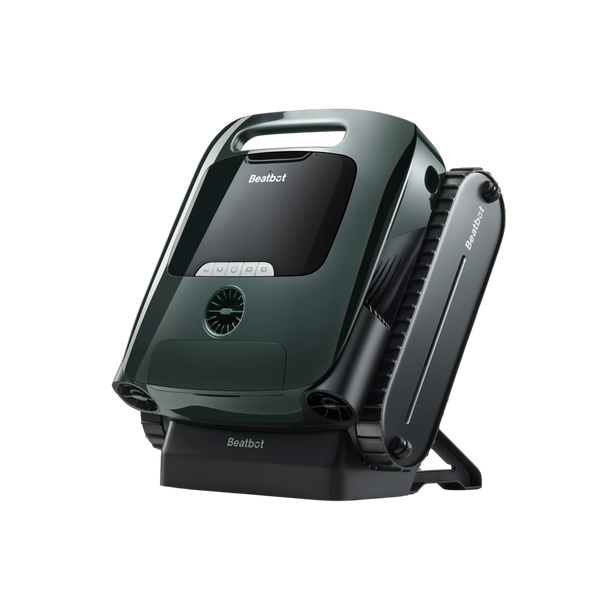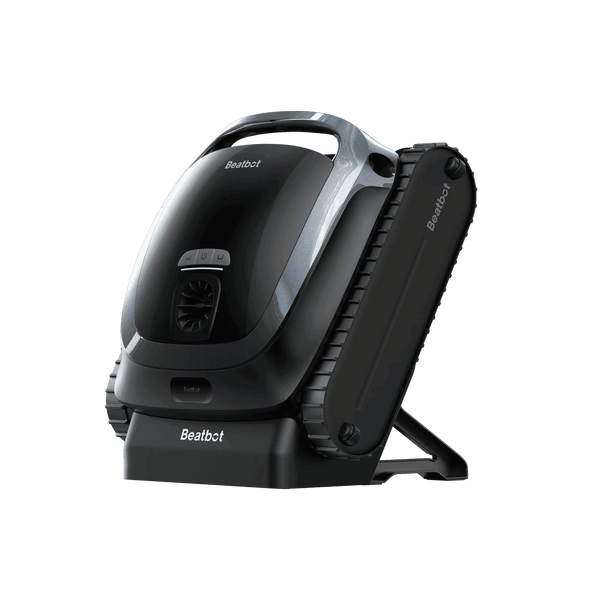Mastering Pool Maintenance: How to Clean the Bottom of Pool with Robotic Pool Cleaners
2024-03-10
Ensuring a pristine and inviting pool environment involves efficient maintenance of the pool bottom. Discover the potential of robotic cleaners for effortless and thorough pool maintenance.
Table of content
Establishing a Regular Cleaning Schedule
Spring
When the temperatures climb and your pool wakes up from its slumber, winter's residual needs to be cleaned out. Use your handheld pool brush to scrub those walls and floor, especially in the corners and cracks where algae seem to always find a way to hide. While you're at it, vacuum the bottom to catch debris. Make it a weekly routine to test your water and adjust the pH, chlorine and alkalinity levels as needed to be sure this little aquatic paradise isn’t inviting algae.
Summer
Now that Swimmers are Coming to You They should get at least 2 bottom cleans a week. In addition to routine vacuuming, weekly brushing will remove any stubborn algae. Surface skim every day to catch flying debris before it slips beneath the surface. Run your pool pump 8–12 hours a day for best circulation and filtration

Fall
With cooler weather, reduce bottom cleans to weekly or biweekly. Continue sharp with chemical checks to stay in balance and prevent bloom scaling. Use the cooler temps to tackle maintenance like repairs for minor pool damage or change worn equipment, ensuring that your pool is in excellent shape.
Winter
A pool cover is second to a winter best buddy, a cover helps keep the water protected from debris, and is much cleaner come spring. Which means you can scrub and vacuum your pool less when you are swimming again. If exposed, bottom cleanings are still performed in increments but the frequency depends on weather conditions and debris present in the water.
Using A Robotic Pool Cleaner for Efficiency
You can make pool maintenance a breeze with the Beatbot AquaSense 2 Ultra - your new best friend for a sparkling clean pool bottom. No more fretting about lugging a vacuum around the place and getting every corner.
We liked that this smart cleaner has your back in terms of using its AI targeted cleaning function helping it to methodically scan the pool floor. It doesn't just sit there happy after its first sweep. Instead, it sifts scrupulously for debris left unspotted. If it detects anything hiding out on the bottom, it quickly changes course to hone in and eliminate those leftovers.
Implementing Manual Cleaning Techniques
Although with robotic cleaners making it easy to keep your pool clean, you will want to occasionally implement some manual cleaning techniques to ensure a clear pool bottom. Brushing the walls and floors of the pool regularly is essential as it helps with the fact that sometimes algae and debris cling to the surface of the walls. This agitation is incredibly important because it forces these impurities into the water where they will be much easier for your filtration system to trap and remove.
So in order to use those methods, you'll need to gather a few tools for manually cleaning your pool:
- Pool brush
- Telescopic pole
- Vacuum hose
- Garden hose
- Gloves and goggles (optional)
Preparation is key. When cleaning the swimming pool, use a skimmer net to clear the pool surface of debristo avoid blockages. Take a moment to check your pool's water level – it's like finding the perfect depth for a refreshing swim. You don't want it too low, which could stress out the pump, or too high, making it a bit harder for the vacuum to do its job effectively. Finally, give your vacuum hose a "suction boost" by fully submerging it underwater. This gets rid of any air bubbles and ensures a strong suction, so your vacuum can glide effortlessly along the pool floor, picking up every bit of dirt and debris.
When you vacuum, use your skimmer net to give the water a quick "hair combing" and remove any floating leaves or debris. This keeps your vacuum hose clear and prevents annoying clogs.Next, make sure your pool's water level is just right – not too low, which could strain the pump, and not too high, which might make vacuuming a bit trickier. It's like finding the perfect depth for a refreshing swim.Lastly, prime the vacuum hose by fully submerging it underwater. This simple step removes air bubbles and creates a strong suction, so your vacuum can effortlessly glide along the pool floor and pick up all the dirt and debris.
Rinse off the vacuum head and other equipment with clean water as soon as you finish cleaning, so nothing will clog and keep them working efficiently next time! Manual cleaning keeps your pool bottom pristine and water clear while supplementing the efforts of robotic cleaners.
Maintaining Proper Water Chemistry
Maintaining proper water chemistry is also crucial for preventing algae and other contaminants from building up on your pool bottom. Start by regularly testing your pool's pH, chlorine, and alkalinity levels.
The ideal pH range is between 7.4 and 7.6 , which ensures chlorine effectiveness and swimmer comfort. Chlorine levels should be maintained between 1-3 ppm to effectively sanitize the water and prevent bacterial and algal growth.
Total alkalinity should be kept within the range of 80 to 120 ppm to stabilize the pH and prevent fluctuations. If your alkalinity is too low, you can raise it by adding baking soda (sodium bicarbonate), and if it's too high, you can lower it with dry acid (sodium bisulfate).
Periodic shock treatments are also essential. Shocking your pool involves adding a high dose of chlorine to oxidize organic contaminants and kill any existing algae. This is particularly important after heavy use or exposure to environmental contaminants. For best results, perform shock treatments at night to prevent sunlight from breaking down the chlorine.
Expert Tips for Preventing Future Pool Bottom Dirt Issues
- When your pool is not in use, make it a habit to cover it with a pool cover. This simple step can significantly reduce the amount of leaves, dust, and other debris that settle on the bottom, keeping it cleaner for longer.
- Keep the area around your pool tidy by regularly sweeping or mowing the lawn, and pruning nearby trees and bushes. This helps prevent leaves and branches from falling into the pool, reducing the debris that accumulates at the bottom.
- The skimmer basket is designed to catch debris before it reaches the pool's bottom. Make sure to check and clean the skimmer basket frequently, especially after windy days or heavy use, to ensure it's effectively trapping debris and not getting clogged.
- Consider installing a leaf net over your pool during the fall season or when there's heavy leaf fall. This can provide an extra layer of protection, catching leaves before they have a chance to enter the water and sink to the bottom.
- Have a professional pool technician inspect your pool periodically. They can identify any potential issues, such as cracks or leaks in the pool's structure, which could lead to dirt and debris accumulating at the bottom. Regular inspections help catch and address these problems early, keeping your pool bottom clean and in good condition.
Relative Blogs
About the author



















